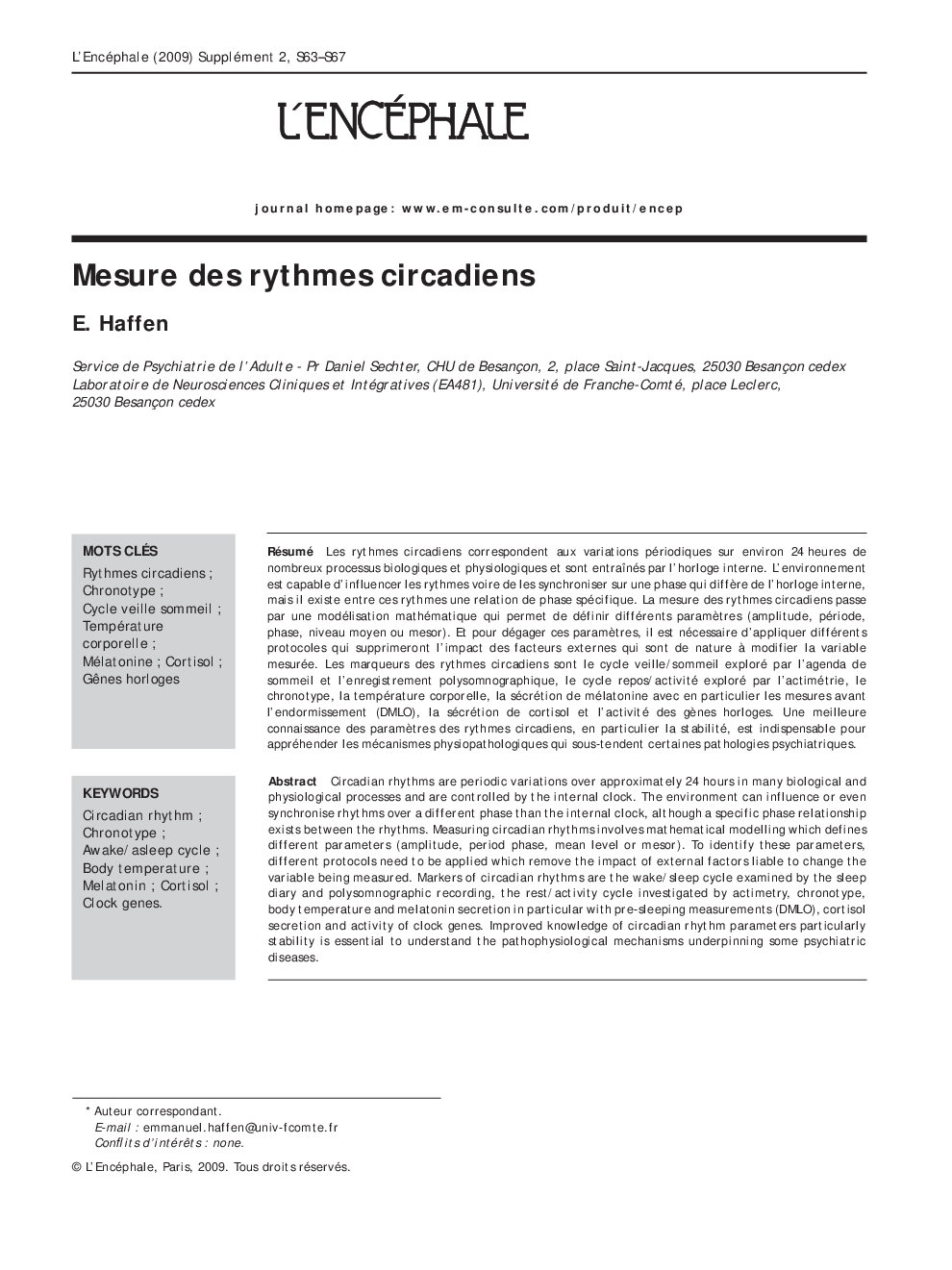| Article ID | Journal | Published Year | Pages | File Type |
|---|---|---|---|---|
| 4182515 | L'Encéphale | 2009 | 5 Pages |
Abstract
Circadian rhythms are periodic variations over approximately 24Â hours in many biological and physiological processes and are controlled by the internal clock. The environment can influence or even synchronise rhythms over a different phase than the internal clock, although a specific phase relationship exists between the rhythms. Measuring circadian rhythms involves mathematical modelling which defines different parameters (amplitude, period phase, mean level or mesor). To identify these parameters, different protocols need to be applied which remove the impact of external factors liable to change the variable being measured. Markers of circadian rhythms are the wake/sleep cycle examined by the sleep diary and polysomnographic recording, the rest/activity cycle investigated by actimetry, chronotype, body temperature and melatonin secretion in particular with pre-sleeping measurements (DMLO), cortisol secretion and activity of clock genes. Improved knowledge of circadian rhythm parameters particularly stability is essential to understand the pathophysiological mechanisms underpinning some psychiatric diseases.
Keywords
Related Topics
Health Sciences
Medicine and Dentistry
Psychiatry and Mental Health
Authors
E. Haffen,
